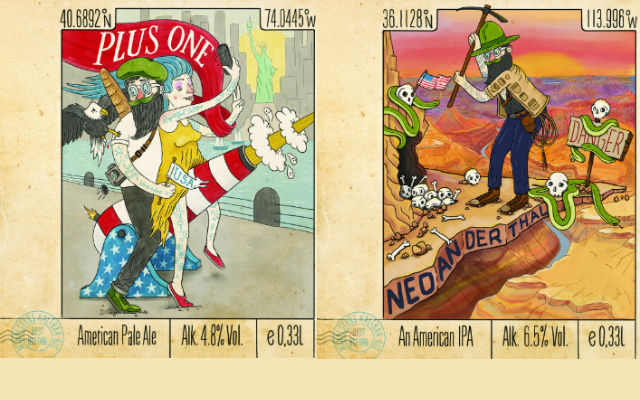
In an ongoing series, Brewer will take a small note from interviews of some of the stories it has run and give a small tidbit that didn’t make the issue but is still worth diving into. “Malt Q&A” appears in the July/August issue of Brewer.
Andrew Zinn of Wicked Weed and Paul Liszewski from East Brother Beer shared a lot when asked about using six-row malt and we couldn’t fit all the great insights for our July/August issue of Brewer.
Liszewski, the Head Brewer for the Richmond, California brewery who was a part of the production of its Pre-Prohibition Lager explained that six-row attributes a bit more of a grainier flavor, with more proteins and enzymes.
“The increase of enzymes allows brewers to utilize adjuncts in the beer, like corn and rice, to brew a lighter and more crisp beer,” he said. “The higher proteins will also aid increase the mouthfeel and head retention in the beer.
The Admiral Maltings Atlas six-row is a floor-malted grain, like Marris Otter.
”The old-world floor malting techniques provide more depth of flavor compared to modern techniques typically utilized in generic two-row,” he added. ”Two-row malt tends to have plumper grains which attribute to increased efficiency — use less grain for the same amount of extract, and a maltier flavor.”
During the lauter with 6-row, Liszewski said the smaller kernel size and increased amount of husk provides an easier flow as well.
Zinn did say that he doesn’t see many extra technical challenges with six-row.
“Especially with craft malting, I would encourage brewers to experiment with six-row in styles and situations other than the traditional adjunct Lagers where one might expect to use them,” he said.
Zinn’s only real prior expectations were based on the limited experience he had with six-row as a homebrewer.
“In general less flavorful, and less of the round maltiness generally sought after in non-macro styles. So — not to keep harping on the same point — in the early days of working with this malt, it was a big surprise to me to find out that the malt was six-row.
“I think when we first started using it, the goal was just to start using locally sourced Pilsner malt, without a whole lot of thought to two-row vs. six-row.”
During recipe formulation, Liszewski feels a brewer needs to pay attention to the subtle flavor differences and potential for changing the brewing process to accommodate the differences in the performance of six-row versus two-row malt.
For the Pre-Prohibition Lager, Liszewski wanted to create a version that reflected the malts that were available to brewers during that time.
”We use flaked maize, which is pregelatinized and does not require a cereal cooker, and we could potentially create the same beer using two-row varieties, but the subtle flavor differences in six-row allowed us to create a more authentic version of Pre-Pro Lager.”
Until this year, Liszewski said they only had one choice for six-row, and overall, he was happy with it.
“But I always thought that this beer could be better,” he said.
When Admiral Maltings announced that they were adding a six-row variety to their portfolio of malts, he immediately jumped on the opportunity.
“In fact, Admiral Maltings increased their initial production run in order to fulfill our order,” he said.
The Atlas Malt is an heirloom variety that hasn’t been brewed for decades, and there wasn’t any reference to rely on to determine flavor profiles.
So East Brother performed a taste analysis during the first of three brews for the batch to determine if they would need to change the recipe for the later brews to accommodate any unforeseen problems.
Admiral Maltings performed an analysis with their test batch and the batch for the East Brother’s order.
“We are in constant contact so we could determine if we wanted to make changes to the recipe,” Liszewski said. ”We ended up supplementing the mash with a bit of Admiral Pils to help ensure that we hit out OG. We incorporated a protein rest in the previous brews, so that wasn’t a huge change for us.”
The result was a huge success,” he said.
“The more pronounced and depth of malt flavors was astonishing from the previous versions. I picked up flavors like honeysuckle and clover that weren’t present before,” he said. ”The best way I can describe it is, you can taste the field and everything that helped pollinate the grain.”
East Brothers may work with the malt in a Saison or even a sour.
“The flavor from this malt should carry over and add some more layers of flavor to these styles,” Liszewski said. “In a practical sense, perhaps supplementing grain bills with some six-row to boost the enzymatic power of the mash to adjust for two-row lot differences — similar to using acidulated malt to help adjust mash ph or carafoam/pils to add some mouthfeel and head retention.
“If brewers use more six-row, the demand will increase and this will lead to more choices for us to use.”
Photo Credit: Clara Rice Photography






Be the first to comment